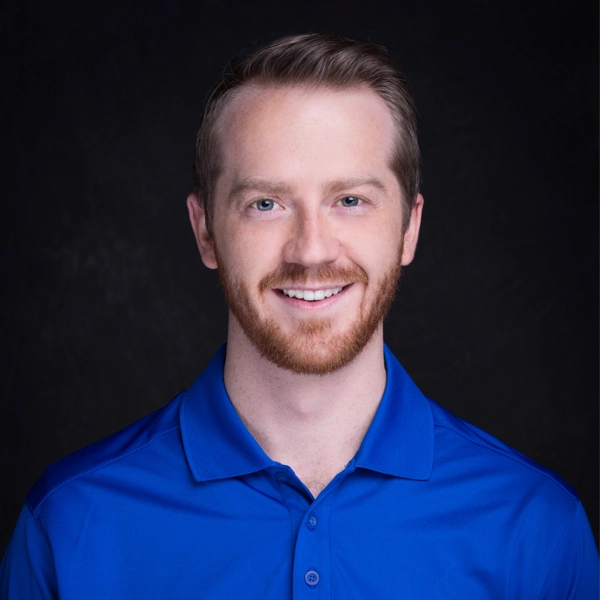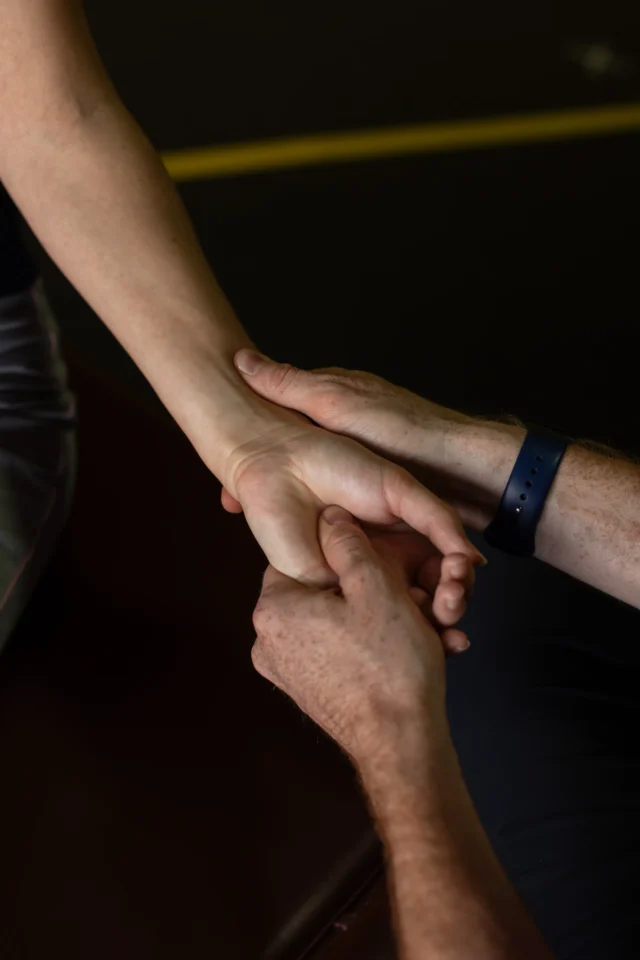A shoulder labrum tear can transform your daily routine from effortless to agonizing. This specialized cartilage injury affects thousands of people each year, yet conventional treatments often provide only temporary relief while missing the underlying causes that led to the injury.
Your shoulder labrum acts as a crucial stabilizer, deepening the shoulder socket and maintaining proper joint function. When this fibrous ring tears, it compromises your entire shoulder’s stability and can lead to persistent pain, weakness, and limited mobility.
This comprehensive guide explores the causes and symptoms of labrum tears, and reveals how advanced chiropractic techniques are revolutionizing treatment outcomes. You’ll discover why traditional approaches fall short and learn about specialized methods that target root causes rather than just managing symptoms—providing the lasting recovery you deserve.
Understanding Your Shoulder Labrum and Common Injury Causes
The shoulder labrum is a ring of fibrous cartilage that surrounds the rim of your shoulder socket (glenoid cavity). This specialized tissue performs several critical functions that keep your shoulder working properly.
Your labrum deepens the shoulder socket by up to 50%, creating a more stable base for your upper arm bone. It also serves as an attachment point for important ligaments and provides a smooth surface that allows your shoulder to move freely through its full range of motion.
How Shoulder Labrum Tears Develop
Labrum tears typically fall into two categories: traumatic and degenerative. Understanding which type affects you helps determine the most effective treatment approach.
Traumatic tears occur suddenly from specific incidents like falls onto an outstretched arm, direct impacts to the shoulder, or forceful pulling motions. Athletes who participate in overhead sports—baseball, tennis, swimming—face higher risks due to repetitive stress on the labrum.
Degenerative tears develop gradually over time as the labrum naturally wears down with age and repeated use. These tears become more common after age 40, even in people who haven’t experienced specific shoulder injuries.
Certain activities and conditions significantly increase your risk factors. Repetitive overhead motions, previous shoulder dislocations, muscle imbalances around the shoulder joint, and poor posture all contribute to labrum vulnerability.
Recognizing Shoulder Labrum Tear Symptoms
Shoulder labrum tears produce distinctive symptoms that often differ from other shoulder injuries. Recognizing these signs early can prevent further damage and improve treatment outcomes.
The most characteristic symptom is deep, aching pain within the shoulder joint itself, particularly during overhead movements or when reaching behind your back. Many patients describe a catching or locking sensation when moving their arm through certain positions.
You might notice significant weakness when lifting objects overhead or performing pushing motions. This weakness often feels disproportionate to the pain level, indicating that the underlying muscle activation patterns have been disrupted.
Sleep disturbances are common, especially when lying on the affected shoulder. The pain often worsens at night, making it difficult to find comfortable sleeping positions.
Other symptoms include grinding or clicking sounds during shoulder movement, reduced range of motion in specific directions, and instability—feeling like your shoulder might “give out” during certain activities.
Straight Up Chiropractic’s Revolutionary Treatment Approach
At Straight Up Chiropractic in St. George, Utah, Dr. Gavin Hall takes a fundamentally different approach to treating shoulder labrum tears. Rather than simply addressing symptoms at the injury site, his methods target the underlying neuromuscular dysfunction that allows these injuries to occur and persist.
Dr. Hall is one of only two practitioners in Southern Utah trained in Advanced Muscle Integration Technique (AMIT) and the only chiropractor in the area certified in Neural Pathway Integration (NPI). These advanced techniques represent a significant evolution beyond traditional chiropractic care.
Advanced Muscle Integration Technique (AMIT) for Shoulder Recovery
AMIT addresses one of the most overlooked aspects of shoulder labrum tear recovery: muscle inhibition. When you experience a shoulder injury, your nervous system often “shuts down” specific muscles to protect the injured area. While this serves as a protective mechanism initially, these muscles frequently remain inhibited long after the initial injury has healed.
This muscle inhibition creates compensation patterns throughout your entire kinetic chain. Your body adapts by overusing other muscles, creating imbalances that perpetuate dysfunction and increase re-injury risk.
AMIT works by identifying which specific muscles have become inhibited and then using targeted techniques to “reactivate” proper neurological communication between your brain and these muscles. This restoration of normal muscle activation patterns allows your shoulder to function as an integrated unit rather than a collection of compensating parts.
The technique involves precise muscle testing to identify inhibition patterns, followed by specific therapeutic interventions that restore normal neurological function. Patients often experience immediate improvements in strength and range of motion as proper muscle activation returns.
Neural Pathway Integration (NPI) for Complete Recovery
While AMIT focuses on muscle function, NPI addresses the neurological control systems that coordinate complex movement patterns. Shoulder labrum tears often disrupt the intricate neurological pathways that allow your brain to properly coordinate shoulder movement with the rest of your body.
NPI uses gentle, non-invasive techniques to restore proper neurological communication throughout your entire nervous system. This comprehensive approach recognizes that your shoulder doesn’t operate in isolation—proper shoulder function depends on coordinated activity from your core, spine, and even your feet.
The technique works to restore these complex coordination patterns that traditional treatments typically ignore. When proper neurological integration is restored, patients often experience improvements that extend far beyond just their shoulder pain.
Full-Body Integration for Lasting Results
What sets Dr. Hall’s approach apart is his understanding that shoulder labrum tears rarely occur in isolation. Most patients have developed compensatory movement patterns that affect their entire kinetic chain—from their feet all the way up to their neck.
During treatment, Dr. Hall assesses and addresses dysfunction throughout your entire body. This might include adjustments to your spine, pelvis, ribs, and even your feet, depending on the compensation patterns your body has developed.
This comprehensive approach explains why patients often experience improvements in areas beyond just their shoulder. When proper biomechanical function is restored throughout the entire body, many chronic issues that seemed unrelated to the shoulder injury also resolve.
Personalized Care That Addresses Root Causes
Every shoulder labrum tear occurs within the context of an individual’s unique biomechanics, injury history, and lifestyle demands. Dr. Hall’s approach recognizes this individuality by creating completely customized treatment plans for each patient.
Your treatment plan begins with a comprehensive assessment that goes far beyond simply examining your shoulder. Dr. Hall evaluates your entire movement system, identifies specific muscle inhibition patterns, and assesses how your body has adapted to the injury over time.
This thorough evaluation allows him to design a treatment strategy that addresses your specific dysfunction patterns rather than applying a one-size-fits-all protocol. Some patients may need extensive work on core stability, while others require focus on postural corrections or addressing old ankle injuries that have created compensatory patterns.
Beyond Symptom Management
Traditional treatments often focus on managing pain and inflammation—essentially treating the symptoms rather than addressing why the shoulder labrum tear occurred in the first place. Dr. Hall’s approach digs deeper to identify and correct the underlying factors that made your shoulder vulnerable to injury.
This might include correcting postural imbalances from desk work, addressing old injuries that created compensation patterns, or restoring proper movement mechanics that have become dysfunctional over time. By addressing these root causes, the treatment provides lasting results rather than temporary symptom relief.
Patients frequently report that not only does their shoulder pain resolve, but they also experience improvements in energy levels, sleep quality, and overall physical performance. This happens because restoring proper neurological function and biomechanics has wide-reaching effects throughout the entire body.
Patient Success Stories and Treatment Outcomes
The results speak for themselves. Patients consistently report not just pain relief, but restored function that allows them to return to activities they thought they’d have to give up permanently.
Derek H., a martial arts practitioner, shared his experience: “Dr Hall is great! He takes his time, he’s thorough and NOT an in and out kind of practitioner. I felt as he listened to my actual complaint. He helped me recover from a jiu jitsu injury. His muscle work is unlike any practitioner I’ve ever met and his shoulder adjustment is game changing!”
Another patient noted the comprehensive nature of Dr. Hall’s care: “Dr. Hall is definitely not the stereotypical ‘crack and come back’ chiropractor. He is really about strengthening and regaining wellness. I have been so impressed with his technique and bedside manner that I have referred others…recently my husband…who is also very pleased!”
These testimonials highlight a common theme: patients appreciate the thorough, individualized approach that addresses their specific needs rather than applying generic treatments.
What to Expect During Your Recovery Journey
Your journey to recovery begins with an extensive initial consultation where Dr. Hall takes time to understand your complete health history, lifestyle demands, and specific goals. This comprehensive evaluation is essential for identifying all the factors contributing to your shoulder labrum tear.
The physical examination involves detailed assessments of your movement patterns, muscle activation, and neurological function. You’ll likely be surprised by how many areas of your body are evaluated beyond just your shoulder. This comprehensive approach is necessary for identifying the root causes of your condition.
Treatment sessions typically combine multiple techniques based on your specific needs. You might receive AMIT work to reactivate inhibited muscles, NPI techniques to restore neurological integration, and targeted adjustments to optimize joint function throughout your body.
Many patients experience noticeable improvements after their first treatment session. However, lasting changes require time as your nervous system adapts to restored function and new movement patterns become established.
Dr. Hall also provides specific exercises and lifestyle modifications tailored to your situation. These aren’t generic stretches or strengthening exercises—they’re precisely chosen interventions designed to support and maintain the neurological and biomechanical changes achieved during treatment.
Take the First Step Toward Complete Recovery
Don’t let a shoulder labrum tear limit your active lifestyle any longer. Dr. Hall’s advanced treatment methods offer a proven pathway to lasting recovery that goes beyond temporary symptom relief.
The combination of AMIT and NPI techniques provides a comprehensive solution that addresses both the immediate injury and the underlying patterns that contributed to the problem. This approach not only helps you recover from your current shoulder labrum tear but also reduces your risk of future injuries.
Contact Straight Up Chiropractic today to schedule your comprehensive evaluation and discover how specialized chiropractic care can restore your shoulder function and get you back to the activities you love.



